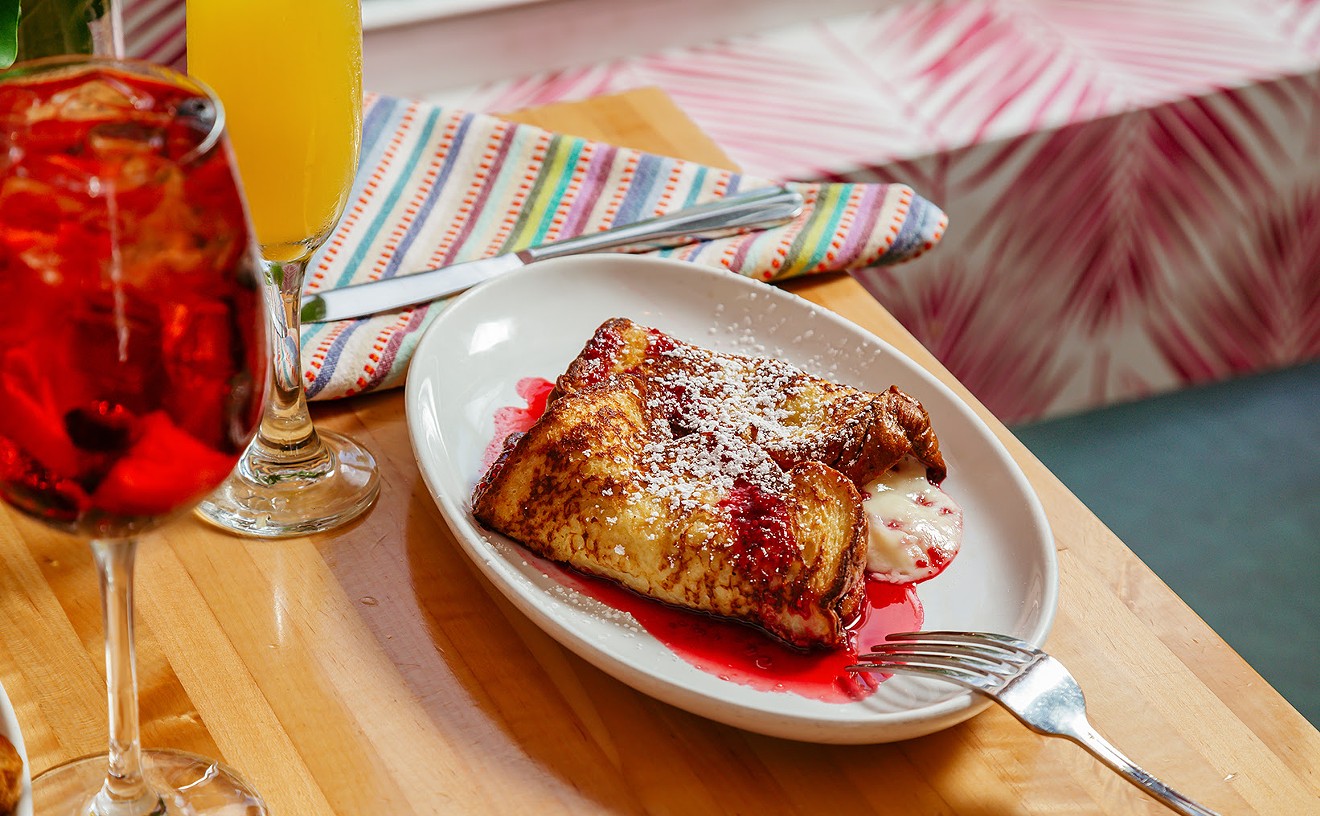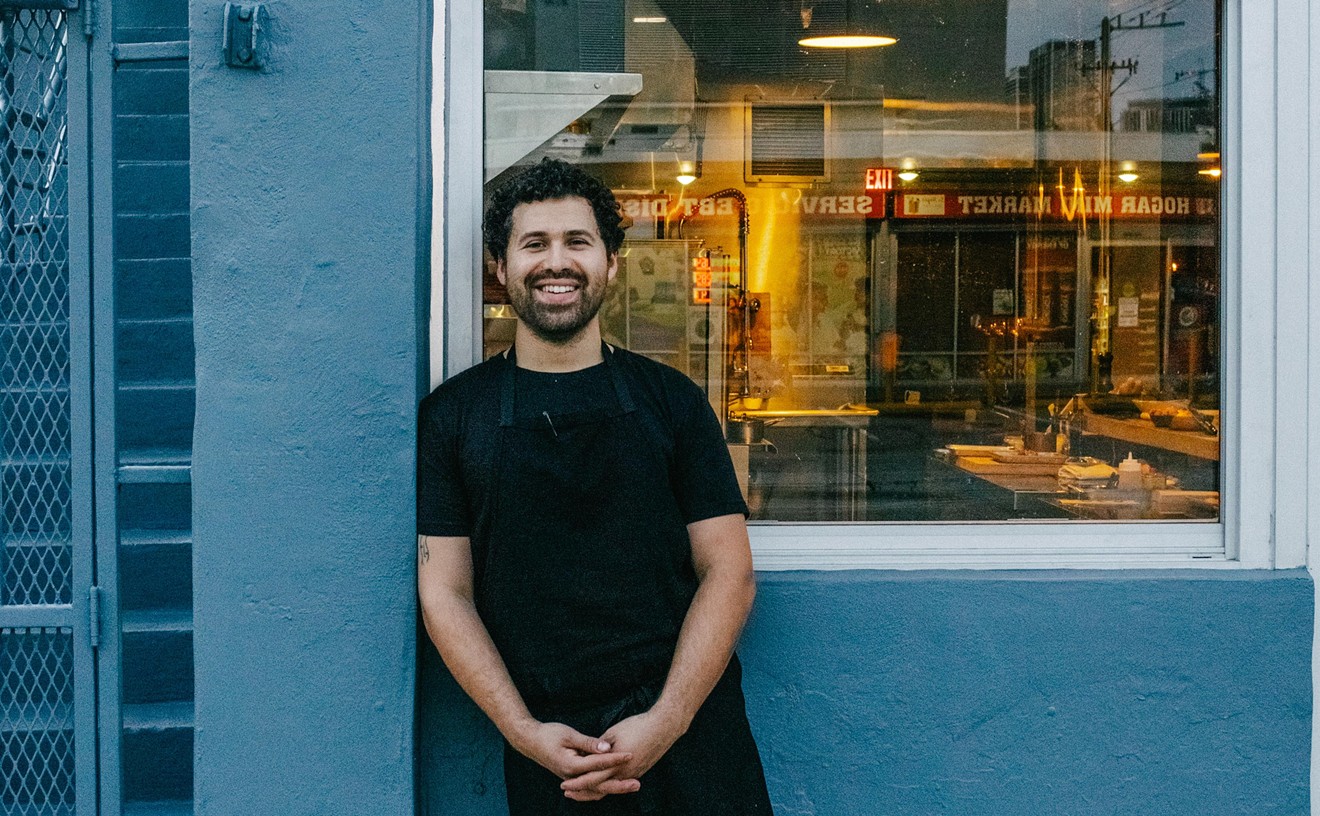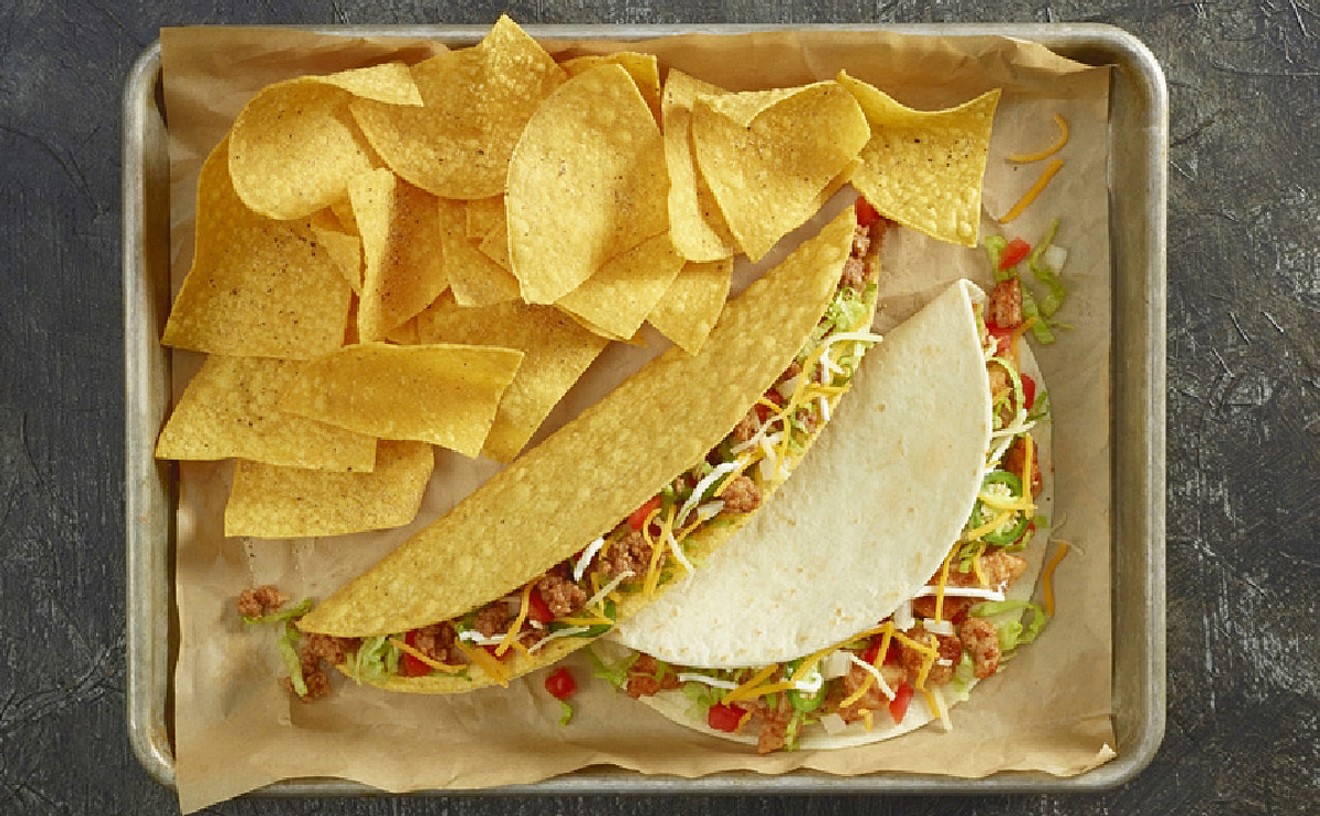Van Aken left virtually as my moving van pulled in. "It's not too late to tell the driver to turn around and drive back north," noted my disconsolate partner, who'd also been looking forward to having a world-class restaurant as our neighborhood lunch room.
But we stayed, and soon found that turnover at the many eateries lining Española Way was as high as that on Ocean Drive. The food, however, wasn't as good, which is saying something considering the petrified display plates that then, as now, entice tourists on the latter. This seemed a particular pity since Española's festively painted buildings, evoking a fantasy Spanish/French Mediterranean village, were so seductive that you wanted to linger at a sidewalk café, maybe dining on some satisfying shellfish or a steak/frites, maybe scribbling something in a journal, maybe daydreaming of American expatriates along Paris's Left Bank in the Twenties.
This bohemian atmosphere was indeed what Española Way's creator, N.B.T. Roney, had in mind for the street when he hired architect Robert Taylor in 1925 to design a haven for artists and lovers of art. From the beginning, though, Española drew rowdies who were more high-rolling than high class. Rumor has it that Al Capone ran a gambling ring from the Clay Hotel while on the lam. It's a fact, though, that Desi Arnaz sparked the Thirties rumba craze in the Clay's nightclub. Hemingway, on the other hand, repatriated in Key West. Perhaps Española Way's steak/frites possibilities were as unlikely back then as during most of my time in South Beach.
The sunny street's two rays of culinary sunshine in the nearly dozen years I've known it were tiny Á La Folie (which continues to serve great crêpes in an authentic French café ambiance) and Liaison, which folded despite its fabulous New Orleans-inspired food. Liaison's main problem was its location just beyond the western edge of Española Way's village; the place was practically hidden from view. But now a fountained Plaza de España, completed in 2002, has visually connected Española's western end to its main block, and Liaison's former corner space has been taken over by a satisfying successor: Tangerine.
In the three months it has been open, Tangerine has also been referred to in the media as 1436, its address on Drexel Avenue. The restaurant's own menu and advertising only add to the confusion regarding its name. And that's not the restaurant's only confusing terminology. Its langoustine shrimp steak, for instance, is a triple-whammy word puzzle. Like so-called shrimp scampi, the name is redundant and contradictory. Scampi isn't a style of preparation but rather the Italian term for a type of shellfish that is similar to shrimp but is not shrimp; it's more like a mini-lobster, a sort of shrimp/lobster cross. The same is true of langoustine, a French term. (The British call them Dublin Bay prawns.)
So was Tangerine offering langoustines or shrimp? Judging from personal experiences in Europe, I'd say these were shrimp -- four very big ones, though not as hulking as the word "steak" suggests. They were, however, grilled to tender perfection, accompanied by a refreshing tomatillo-papaya salsa, and sauced with a lemon cream that was not simply citrusy but full-flavored enough to seem almost meaty. I would have preferred a thicker sauce; it was more broth than gravy. But my dining companion proclaimed, "This may be the best thing I've ever eaten!" It was without question mop-your-plate-quality stuff -- or would have been, had our server not inexplicably whisked away our bread basket as soon as the dish arrived.
Like the langoustines, Maryland crabcakes were a starter for two people, though why I don't know. Two crabcakes can be divided as easily as four shrimps can, and $13 certainly sounds like a less formidable price for an appetizer than $26, something to be considered given Española Way's burrito-budget crowd. That said, the patties were winners: barely breaded, greaselessly sautéed, full of real crab (not surimi, not starch filler), and spiced with enough Latin heat for character without overwhelming the crab's own flavor. Ample puréed red pepper gave the cakes' bed of remoulade sauce a touch of class; no cheesy pickled Thousand Island dressing remoulade here.
Though not described as a two-person appetizer, black molasses barbecued ribs turned out to be enough food for a heavy eater's entrée. Pit or Chinese barbecue fans would have been disappointed by the falling-off-the-bone meat; the ribs' texture was more like braised short ribs. And an abundant application of glaze featuring the heavy, sharp sweetness of blackstrap molasses, the pungency of whole culantro leaves, and a major orange-zest kick made the dish a textbook example of Big Bold Flavors -- one that, like all strong statements, will please some and antagonize others. Next time I'd walk the extra few blocks to Miss Yip for my own ribs fix.
Peanut-smoked beef tenderloin carpaccio had no taste of smoke or nuts. But the texture of the thin, delicate slices -- like rare roast beef -- ensured the steak was something that could be eaten with pleasure by those who shun raw meat. Parmigiano curls on top were genuine Reggiano, and the side arugula salad (which actually had endive and radicchio too) was perfectly dressed with lemon vinaigrette.
Sadly not the same could be said of a wakame-sprout slaw starter, which came saturated in ginger-soy-lime dressing. It was good dressing, just much too much. And the wakame was far too sparse compared to the proportion of alfalfa, sunflower, and mung bean sprouts, plus bell pepper slices.
Judging from the menu's descriptions, entrées did not sound as interesting as appetizers. In addition the restaurant's elegant lounge look, sleek tan and tangerine colors softened by billowing sheer draperies, encourages a more sociable grazing dinner. But Tangerine's proprietor is Pedro Infante, original owner of the now decade-old L'Entrecote de Paris on lower Washington Avenue, so it would be a mistake to miss one of the three steaks. Two of them were tempting: the New York strip with a cracked peppercorn brandy cream demi-glace, and the marinated filet mignon glazed with raspberry/cabernet sauvignon, which is served with white and sweet potato ravioli. "Pedro's Infamous Entrecote" proved irresistible, and at $18 irresistibly priced. The serving was generous; the steak was tender and cooked very rare as ordered; the peppery cream sauce, strongly spiked with Dijon mustard, was a match for the meat. And the thin, crisp pommes frites accompanying it could not have been tastier (my dining companion, who'd put in considerable time in Brussels, pronounced them "Belgian quality," an Academy Award in the French fry world). This was a steak/frites Papa Hemingway would have found worth a special trip up from the Keys.
With the meal, a bottle of South African Fleur du Cap sauvignon blanc was a well-priced and appropriate quaff, not as complex as the label's amazing, unfiltered sauvignon blanc, but clean, with nice notes of apple and even some exotic tropical mango and melon overtones. House-made ice creams -- rich papaya, fruit-filled strawberry, bracing lemon sorbet -- were a lovely, light finish. Tangerine's tables were not full during either of our visits, but with more time and publicity, it's likely that those dining at lesser spots down the block will learn there are much better pickings just across the plaza.
We're looking for freelance writers with at least one year experience describing food and restaurants. Please send clips, résumé, and cover letter to:
Jim Mullin, editor
Miami New Times
P.O. Box 011591
Miami, FL 33101
No phone calls, please










